| Pages:
1
..
13
14
15 |
JDCanuck
Super Nomad
   
Posts: 2327
Registered: 2-22-2020
Member Is Offline
|
|
Hot water tends to scale out calcium carbonate very rapidly above 120 degrees F and then scaling goes parabolic at temperatures above that. This just
happens to be the minimum temperature to prevent enhanced biological growth of legionella and others in hot water tanks. For that reason alone you
will save a lot in maintenance if you can feed any AC or dehumidifier produced water to your hot water tanks. As I understand you are already
collecting AC water to storage, maybe directing it to the hot water feed would be a benefit if you are using well water?
Mexicans don't seem to mind warm water and the associated risks, but years ago CDC came up with these warnings:
https://www.cdc.gov/legionella/wmp/overview/growth-and-sprea...
[Edited on 12-15-2023 by JDCanuck]
|
|
|
mtgoat666
Platinum Nomad
       
Posts: 20309
Registered: 9-16-2006
Location: San Diego
Member Is Offline
Mood: Hot n spicy
|
|
Quote: Originally posted by RFClark  | I have asked about topes at community meetings and have been told by those in charge that Mexico has rules about the placement of topes. Their use for
residential speed reduction isn’t a choice.
|
i see topes all the time on unpaved roads, and from appearances they are homemade by locals residents. if i were you, i would build the topes and
forget about asking for permission.
i am a fan of the topes made of thick rope. sometimes you can find thick rope on the beach (hawser), or sold as scrap. the 4-in dia. stuff will make
people slow down.
Woke!
Hands off!
“Por el bien de todos, primero los pobres.”
“...ask not what your country can do for you – ask what you can do for your country.” “My fellow citizens of the world: ask not what America
will do for you, but what together we can do for the freedom of man.”
Pronoun: the royal we
|
|
|
Santiago
Ultra Nomad
    
Posts: 3540
Registered: 8-27-2003
Member Is Offline
|
|
RFC: I gotta ask, 3 refers is a lot. Is one of those a freezer?
And back at ya for Holiday cheers.
|
|
|
RFClark
Super Nomad
   
Posts: 2470
Registered: 8-27-2015
Member Is Offline
Mood: Delighted with 2024 and looking forward to 2025
|
|
We’re running a large French Door refer/freezer, small refer under coffee bar upstairs and a 12V auto refer/freezer as an overflow freezer for the
holidays.
I have seriously considered building a walk in cold room. I just haven't found a door yet.
We have a committee that decides things like that. (Street improvements) I’m not on that committee either. What could I know? We live in a bread
box! Making bread now, smells great.
[Edited on 12-15-2023 by RFClark]
Dining Rm Holiday layout
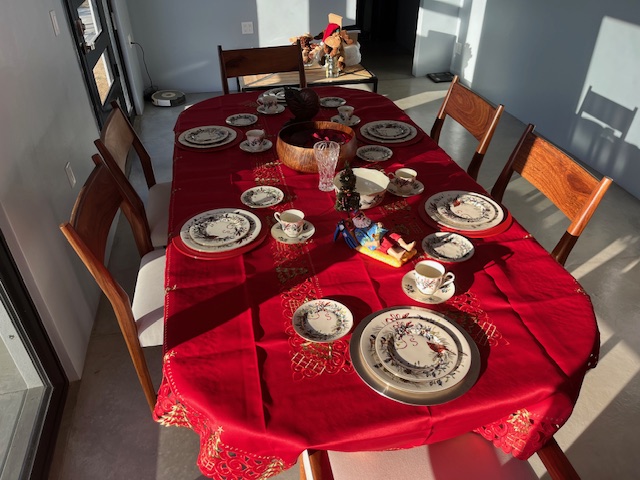
[Edited on 12-15-2023 by RFClark]
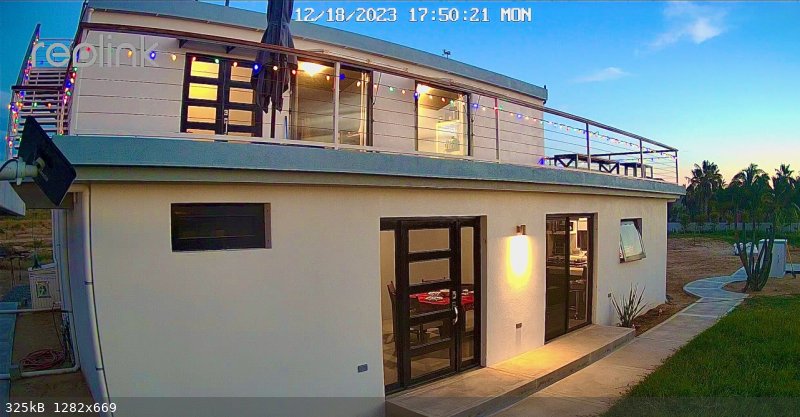
[Edited on 12-19-2023 by RFClark]
[Edited on 12-19-2023 by RFClark]
|
|
|
RFClark
Super Nomad
   
Posts: 2470
Registered: 8-27-2015
Member Is Offline
Mood: Delighted with 2024 and looking forward to 2025
|
|
I worried about that too, but with 4 people not a problem. We still have a lot of stuff to put on the walls.
I have a theory that having foam panels behind the cement walls actually helps with the sound. Even without the table and Chairs the room wasn’t
real live.
|
|
|
RFClark
Super Nomad
   
Posts: 2470
Registered: 8-27-2015
Member Is Offline
Mood: Delighted with 2024 and looking forward to 2025
|
|
It occurred to me that I hadn’t yet reported on how the engineered passive climate control features have performed.
As stated earlier we have a dust control problem. Climate control starts with an area of tall grass along the west and south side of our house. During
the day the prevailing wind is usually from the ocean. The side of our house facing the beach has ground level double-pane doors and windows to allow
in air flow.
The exterior walls are insulated cement painted with white heat reflective paint. The walls themselves have a low thermal mass as compared to cement
block walls. The interior lower floor is poured concrete over crushed rock. Our ground temperature is such that the floor is always a comfortable
temperature.
The air primarily enters from the south end flows north over the exposed concrete floor exiting up the 5’ X 5’ stairwell to the 2nd floor.
The 2nd floor has 4 large double-pane windows along the inland facing wall and 2 more windows on the south wall. The walls are white painted insulated
cement the same as the downstairs. All of the upstairs windows have exterior storm shutters that serve as sun shades when open. The upstairs windows
have interior roller shades and insulated curtains to control lighting and temperature. There are a pair of exterior double doors next to the
stair-well to allow additional air flow into the 2nd floor.
In the evening after sunset the wind first stops then reverses to come from the inland side of the house. The ventilation flow reverses direction with
cool air entering the 2nd floor windows flowing down the stairwell warming the concrete with its collected heat and exiting through the door and
windows.
This passive cycle has worked most days since October without much additional heating or cooling with excellent air exchange and humidity levels.
The operating costs have been minimal. Security, water and road maintenance being the major expense. Internet/phone being second. Fideicomiso and
taxes coming in third. Gas being fourth though very low. The solar system generates all the power required including up to 10KW a day to operate our
PHEV 40 miles.
As we move into Winter we’ll see if any additional heating is required and report back.
|
|
|
JDCanuck
Super Nomad
   
Posts: 2327
Registered: 2-22-2020
Member Is Offline
|
|
We are finding it to be an exceptionally warm early winter(fall?) this year, so are running the AC a bit more than usual. Still finding it doesn't tax
the solar much tho as we get into the next days solar gain at above 50% SOC on lithium batteries after making breakfast. No insulation, all cement
block, indoor temps ranging from 22 to 24 celsius.
Wish we too had an EV to disperse the extra solar availability during the afternoons, as we spend a lot of time floating after batts are fully charged
around 12 until 4pm when solar yield falls off. Still no need for generators, so we test run every 6 months.
[Edited on 12-18-2023 by JDCanuck]
|
|
|
RFClark
Super Nomad
   
Posts: 2470
Registered: 8-27-2015
Member Is Offline
Mood: Delighted with 2024 and looking forward to 2025
|
|
Interesting Baja Nomad Ad for Concrete Panels
From the ad.
“Our DIY Panel is thinner than Urban Concrete’s standard panel line creating an even lighter and super simplified install.”
We used Mexican made Concrete Panels in our project.
https://www.urbanconcretedesign.com/?gclid=EAIaIQobChMIoIj_8...
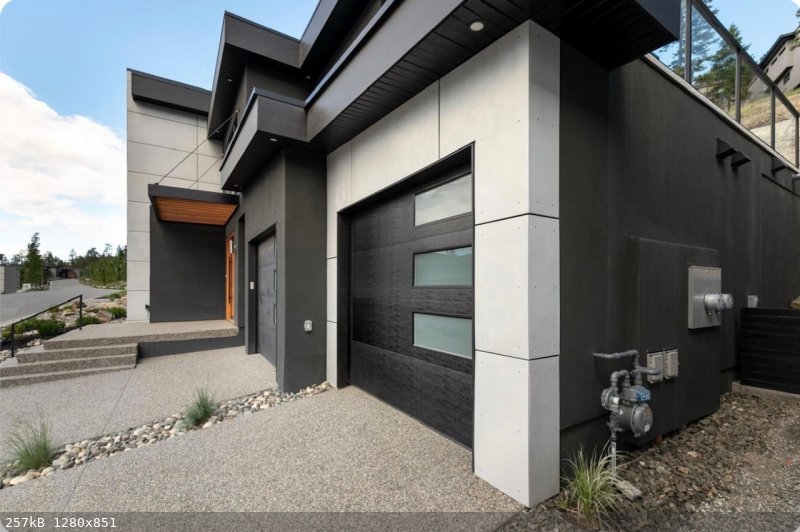
|
|
|
RFClark
Super Nomad
   
Posts: 2470
Registered: 8-27-2015
Member Is Offline
Mood: Delighted with 2024 and looking forward to 2025
|
|
Durock Cement panels
Walkerts,
We used the cement panels in a number of exterior and interior applications. We have both conventional block and steel exterior walls covered with
closed cell foam with foil on both sides.
The exterior concrete panels are attached with screws and covered with SS mesh to support the cement coating. The interior walls are covered with
rigid foam panels or cement panels and SS mesh again covered with cement.
It’s a little difficult to compare the 2 methods because generally block construction isn’t insulated. Exterior it’s probably about as fast as
cement on block and interior it’s faster and better than conventional drywall. It’s definitely less of a mess as there is very little sanding and
cement is waterproof. The acoustics seem better than drywall as well.
You, anyone is welcome to visit and see the results. We’re usually here M2M me to make arrangements.
[Edited on 1-23-2024 by RFClark]
[Edited on 1-23-2024 by RFClark]
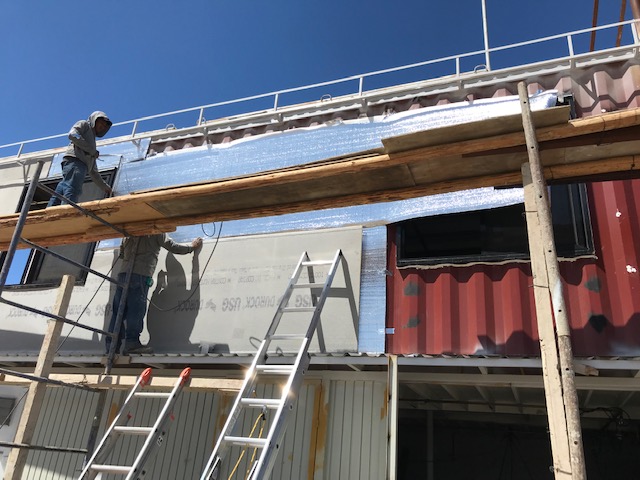
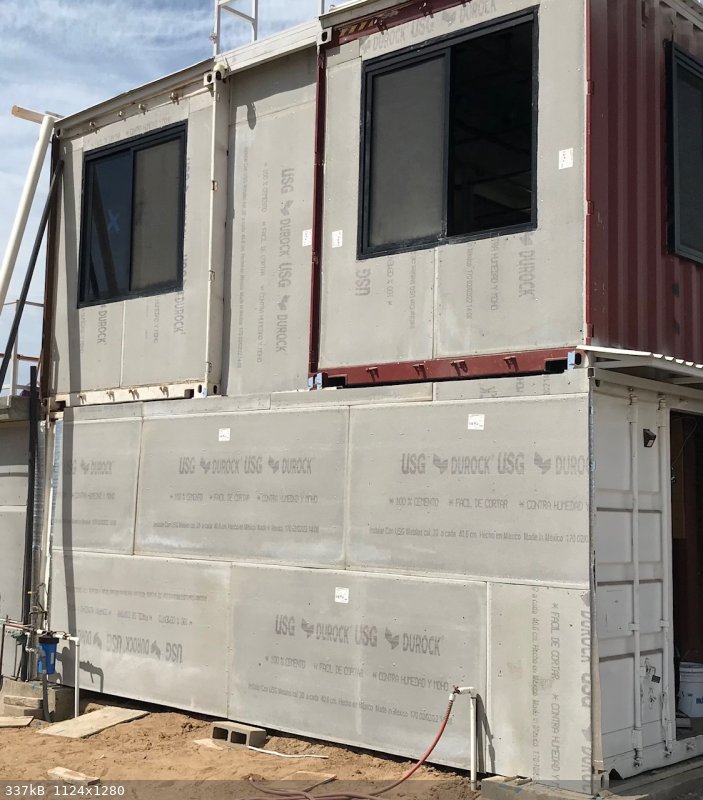
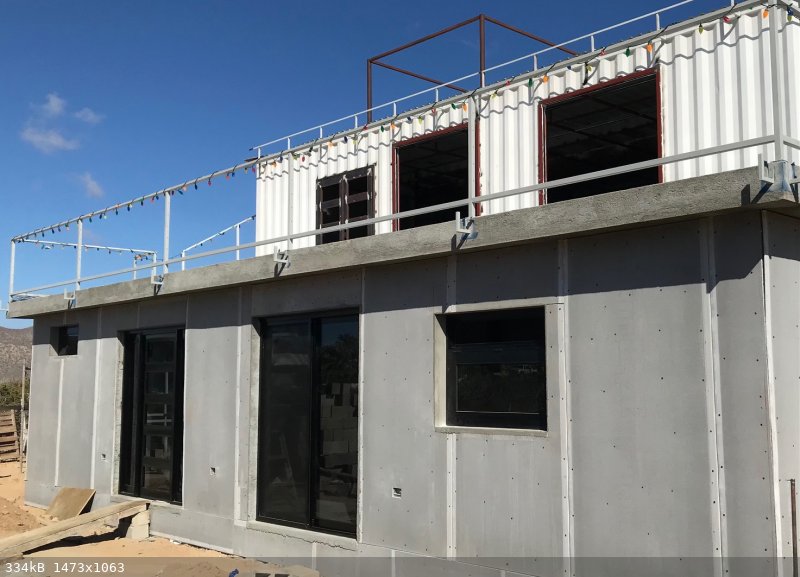
[Edited on 1-23-2024 by RFClark]
|
|
|
surabi
Elite Nomad
     
Posts: 8212
Registered: 5-6-2016
Member Is Offline
|
|
I used that cement board as the walls of my small shop building. FYI it didn't require any mesh to plaster over with cement plaster- I applied it
directly onto the board.
It's stuck on just fine, for 7 or 8 years now. Exterior wall, with sun beating on it and rain.
[Edited on 1-24-2024 by surabi]
|
|
|
RFClark
Super Nomad
   
Posts: 2470
Registered: 8-27-2015
Member Is Offline
Mood: Delighted with 2024 and looking forward to 2025
|
|
Progress Report
Winter has passed down here. That said the water in the Pacific is still cold. The nighttime temperatures are still in the upper 50s
There’s a progress picture of the landscaping. Remember that all this grass grew from a few small strands. The Bamboo is doing well too. The lawn
next to the front door walkway is grown in too.
We’re outputting over 7KW of solar from our 9+KW of panels and using about 25% of our batteries overnight (20KW). That includes induction cooking,
heat pumps and TV plus 2 refrigerators as well as a small freezer.
We charge the PHEV as necessary after the batteries are recharged usually by 10:00 AM.
If you’re in the area stop by! More soon!
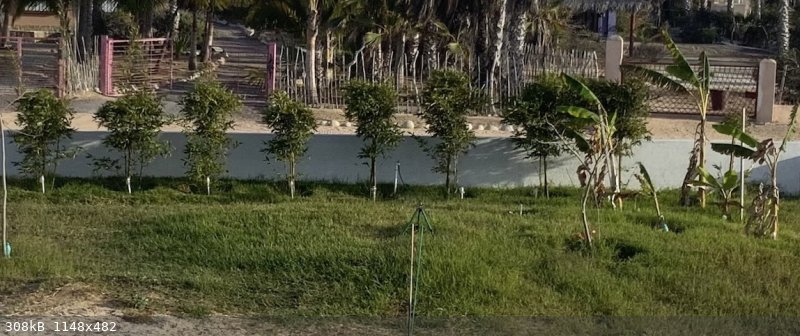
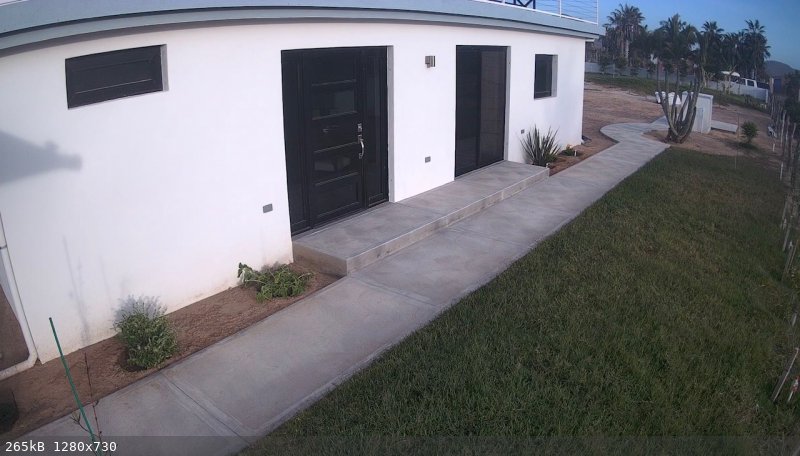
June 2023 the original grass.
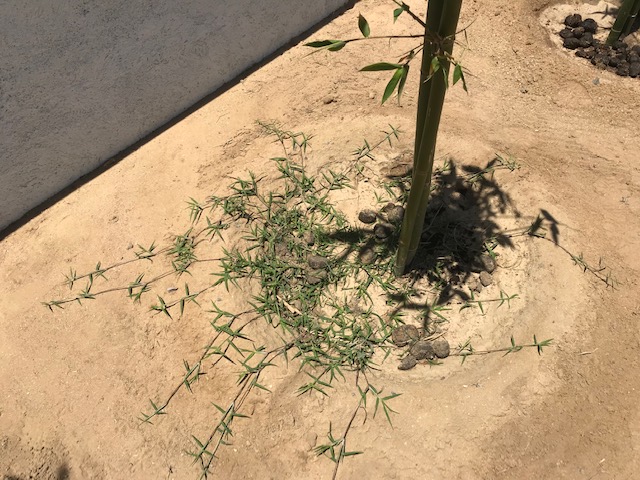
[Edited on 4-28-2024 by RFClark]
|
|
|
surfhat
Senior Nomad
  
Posts: 612
Registered: 6-4-2012
Member Is Offline
|
|
I have great respect for you choosing to build a shipping container based home.
After seeing the possibilities of what these containers can become, and the inherent strength of these steel boxes in a hurricane zone, I have become
a fan. Insulation is primary with these steel boxes, and you appear to have handled that negative well and to your advantage. Ours, included. Thanks
for a new way to have a secure home in this hurricane alley.
Decades ago, I chose the Tridi-foam panels to build with on the East Cape for their hurricane proof strength that was shown when southern Florida got
hammered by a hurricane and the Tridi foam panels survived Hurricane Andrew in Homestead, Fl. That they also help insulate and regulate the temps was
another plus.
I rarely hear anything about these Tridi-panels being used lately, and wonder if some disadvantage has presented itself since the early 90's.
My second choice of building materials at the time would have been what you chose. Thanks RF.
|
|
|
RFClark
Super Nomad
   
Posts: 2470
Registered: 8-27-2015
Member Is Offline
Mood: Delighted with 2024 and looking forward to 2025
|
|
Tri-di panels Our way
This is our approach to cement on foam structural panels. This seems to mirror the commercial approach in Mexico as well. Currently there are 2 large
new stores being built with cement on foam panels in Cabo. One is next to COSTCO. Neither is using mesh on foam however.
One interesting feature of this type of interior construction is its acoustic properties. Concrete on foam seems to have better sound damping
properties than drywall or cement on block walls.
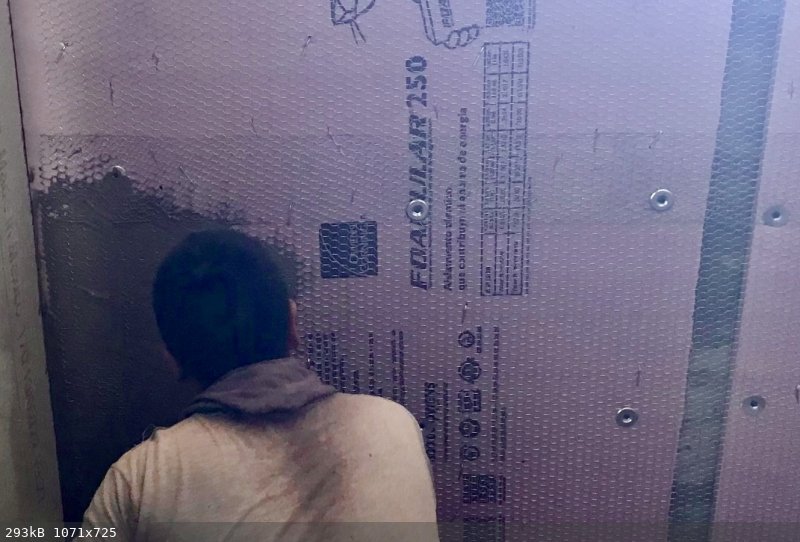
|
|
|
| Pages:
1
..
13
14
15 |

